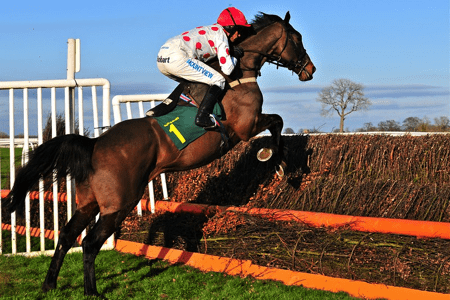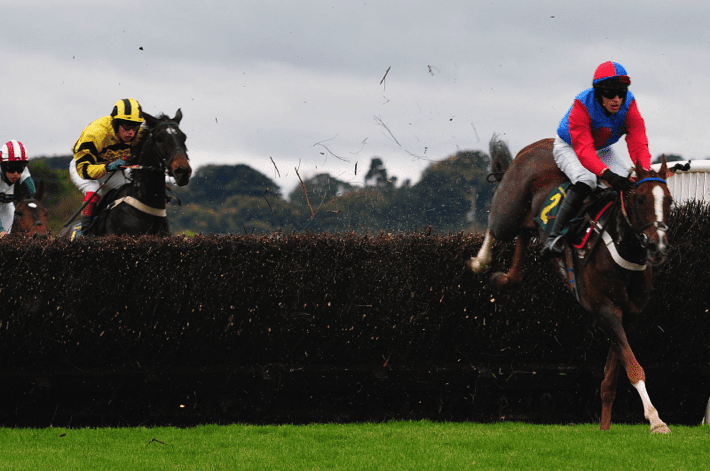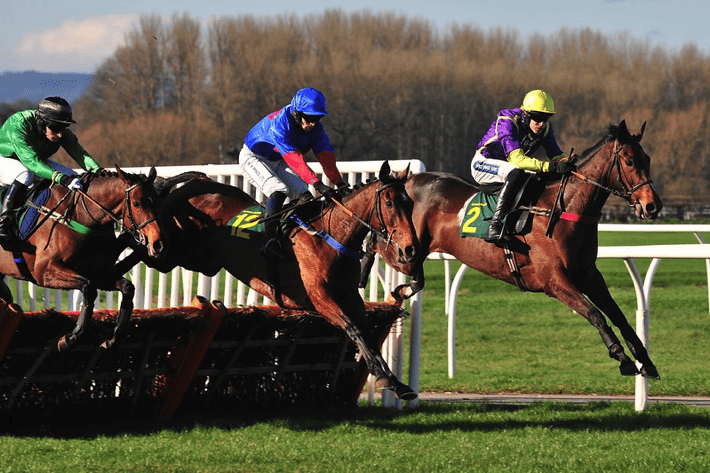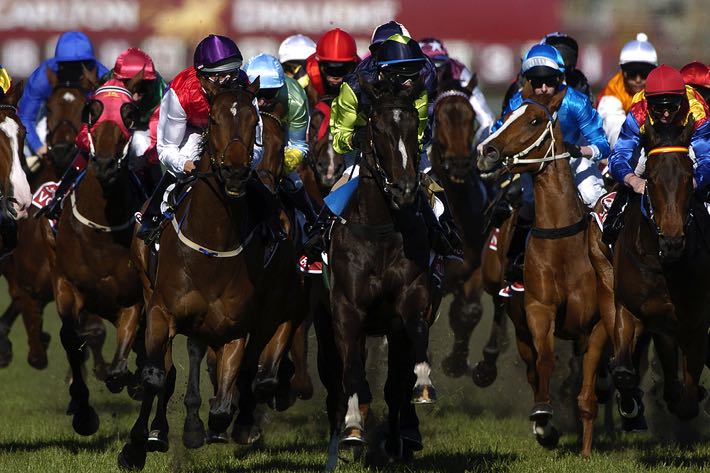
If you’re a fan of horse racing, or even just have a passing interest in it, then the likelihood is that you’ll have a very good sense of what the Grand National is and what to expect from watching it. Known as ‘the World’s Greatest Steeplechase’, the event, which takes place at Aintree Racecourse on the outskirts of Liverpool, the Grand National is the race that even people who don’t like to bet on horse racing tend to have a flutter on. There is often a feeling that something magical will happen, with any number of long-odds winners making it interesting over the years.
Part of that interest comes from the fact that there is usually a large field in the National, with as many as 40 horses taking part in the race. It has never happened that all 40 have made it around the course, such is the challenging nature of the fences that the horse have to negotiate. In fact, the large field often contributes to horses falling to make it to the final straight, given the need to constantly jockey with each other for space in the early stages. The question is, does the race always have 40 runners, or is the field sometimes more varied in its size and competitiveness?
A Quick Explanation of the Grand National

As unlikely as it seems, there is at least a small chance that you might not know all that much about the Grand National. That is in spite of the fact that it is one of the most prestigious and iconic horse racing events in the world. It takes place annually at Aintree Racecourse near Liverpool and is known for its challenging course and thrilling jumps, allowing it to captivate audiences for over 180 years. The race is a handicap steeplechase, featuring a distance of about four miles and two and a half furlongs and boasting 30 demanding fences.
Typically, it attracts a large field of around 40 horses, each carrying different weights based on their ability. The challenging nature of the course, combined with the size and quality of the field, creates a thrilling and unpredictable event. The Grand National has a rich history and has produced many legendary moments and remarkable stories. From horses like Red Rum, who won the race three times in the 1970s, to remarkable underdog victories and heartwarming tales of human-horse partnerships, the race has become synonymous with courage, determination and triumph.
Looking at the Fields
The Grand National has had a field limit of 40 horses since 1993. Prior to that year, there was no set maximum number of participants in the race. However, due to concerns over safety and the crowded conditions on the course, organisers decided to introduce a cap on the number of runners. This limit ensures a manageable and safer race for both jockeys and horses, even though there are some that feel as though the field remains too large. With that in mind, it is worth looking at what the field has been in the years since 1993:
| Year | Number of Runners |
|---|---|
| 1993* | 39 |
| 1994 | 36 |
| 1995 | 35 |
| 1996 | 27 |
| 1997 | 36 |
| 1998 | 37 |
| 1999 | 32 |
| 2000 | 40 |
| 2001 | 40 |
| 2002 | 40 |
| 2003 | 40 |
| 2004 | 39 |
| 2005 | 40 |
| 2006 | 40 |
| 2007 | 40 |
| 2008 | 40 |
| 2009 | 40 |
| 2010 | 40 |
| 2011 | 40 |
| 2012 | 40 |
| 2013 | 40 |
| 2014 | 40 |
| 2015 | 40 |
| 2016 | 39 |
| 2017 | 40 |
| 2018 | 39 |
| 2019 | 40 |
| 2021** | 40 |
| 2022 | 40 |
| 2023 | 39 |
*The 1993 race wasn’t actually made official because of the false start. Several horses did finish the race, but didn’t go into the record books. Even so, we do know how many horses started the event, which is why it is included in the list.
**There was no race in 2020 because of the global health crisis at the time.
The biggest field in Grand National history came in 1929 when 66 horses took to the field. That gives you a sense of how many horses tended to run in the event at one time of another and perhaps why it was that the organisers decided to limit the field. Even though there has been a limit in place since 1993, it hasn’t always been the case that the full contingent has run in the race. There have been numerous reasons for that, including the fact that some horses have pulled out at the last minute, which has come too late in proceedings for any horses to replace them.
The Reserves System

Though the field for the Grand National is limited to 40, there has also been a reserve system in place. It is not uncommon for more than 100 horses to be entered into the race during the early stages, with the field being whittled down as the event itself gets closer. Even after the field has been declared, there would be some horses on the ‘reserve’ list. These would be there just in case any of the chosen 40 are pulled out of the race for one reason or another. At such a point, the reserves would be moved up in order to ensure that a full field was able to run in the race.
The problem was that withdrawals would need to happen by a certain date, which was usually one day before the Grand National was supposed to run. If a horse was not withdrawn by that point then the field would either run with all 40 horses or else the 40 horses planned to run in it minus any that were withdrawn after the deadline had passed. This was not uncommon, which is why several years would see fields of fewer than 40 horses taking part in the race even in spite of the reserves system, which was introduced for the first time in 2000 and came into effect on 13 occasions.
No Reserves from 2023
In December 2022, it was revealed by Aintree Racecourse that the reserve system for the Grand National was being abandoned. From 2023 onwards, there would no longer be reserves needed for the event. Sulekha Varma, the Clerk of the Course, said,
We constantly monitor and review all aspects of the Randox Grand National. The reserves system was introduced with the aim of giving us the best possible chance of ensuring we have a maximum field of 40 runners. However, with the Randox Grand National being such a worldwide phenomenon there are associated demands of raceday data supply which are greater now than they were when the system was introduced.
They went on,
The system had to operate by reserves taking the race card position of the relevant non-runner. This had the effect of reserves, which by definition are the lowest-rated horses in the race, appearing further up the handicap in the race card even though they were carrying the least weight, which made the production of race cards and return of results extremely challenging for a number of outlets. This issue was raised following the running of three reserves in the 2022 race by the British Horseracing Authority, media outlets, international media rights holders and bookmakers.
In other words, it wasn’t so much that Aintree felt that the reserve system didn’t work, but rather that the machinations of running a race as important and influential as the Grand National requires certain things to be in place that can’t be if a reserve system is used. It is a shame to end the tradition, not only for the racecourse but also for the horses, jockeys, trainers and owners that ended up taking part in the event when they otherwise wouldn’t have done. The 2022 reserves, Commodore, Romain De Senam and School Boy Hours, finished 12th, 10th and pulled up respectively.
What the Future Holds for the Grand National
The end of the reserve system means that we are likely to see smaller fields than 40 in the years to come. In 2022, for example, there were 40 runners but three of them were reserves. As a result, only 37 horses would have run if the new system had been in place at the time. Whilst we could all hope that owners will be more sensible in their declarations, the reality is that it is an expensive process to get a horse even into consideration for the race, so owners and trainers don’t take the decision to withdraw a horse from the Grand National lightly in the first place.
It is entirely reasonable to expect smaller fields in the future, even if this is unlikely to be all that common place. Whilst there were 13 reserves who ran in the event between 2000 and 2023, that is simply suggestive of the fact that the majority of the time a full contingent of horses tend to feature. The race itself will always be one of the most important on the National Hunt’s calendar, attracting not just owners and horses from all over the world but also audiences. It is estimated that between 500 and 600 million people tune into watch it globally.
Is 40 the Right Number for the Field?

Whilst this article is about whether the Grand National always has 40 runners, a better question might well be whether it should have fewer. In 2012, nine years after the maximum field of 40 runners was first introduced, broadcaster and former-jockey, Clare Balding, said that the field should be much smaller. Her declaration on the issue came on the back of Synchronised and According to Pete dying in that year’s race. The deaths came in spite of the fact that many of the fences had already been changed and landing sides levelled out to make things as safe as possible.
Balding’s call for a smaller field isn’t without reason. In recent years, the most horses to finish a race came in 1996, when just 27 horses started the event. Of those that started, 17 made it to the end of the race, which suggests that smaller fields make it safer for the horses. That being said, there was one equine fatality in the event, which critics would point to as proof that the field size doesn’t matter. That being said, there have been many safety changes made in the years since 1996, so the combination of those changes with smaller fields would give horses the best possible chance of survival.
It is possible that the industry is making its own mind up on the matter. In 2023, there were fears that the Grand National wasn’t going to have a full contingent of 40 runners. With the best part of three weeks still to go before the race was due to take place, there were just 57 horses for organisers to choose from. The previous year, there had been 78 horses still in with a shout at the corresponding point in the calendar. It was, in fairness, a reflection of the rest of the season, with poor field sizes being a problem in a lot of races, but it is also suggestive of a race that is losing its appeal for some.